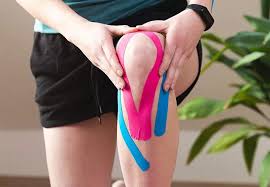As golf season kicks off, many players hit the green with enthusiasm, eager to improve their game. While technique, practice, and equipment play vital roles in golf performance, one often overlooked aspect is cardiovascular fitness. A strong cardiovascular system can significantly enhance a golfer’s performance, endurance, and overall enjoyment of the game.
Why Cardiovascular Fitness Matters
Cardiovascular fitness refers to the ability of the heart, lungs, and blood vessels to supply oxygen to the working muscles during sustained physical activity. For golfers, this crucial for several reasons:
1. Endurance on the Course: A typical round of golf lasts several hours and can involve walking 4 to 6 miles. Good cardiovascular fitness allows golfers to maintain their energy levels throughout the game, reducing fatigue and ensuring they can perform their best until the final hole.
2. Improved Focus and Concentration: Golf requires a high level of mental acuity, from reading the green to strategizing each shot. When cardiovascular fitness is lacking, fatigue can lead to diminished concentration and decision making abilities, which can negatively affect a player’s score.
3. Enhanced Recovery: Golfers often play multiple rounds in a day or on consecutive days. A well-conditioned cardiovascular system aids in faster recovery between rounds, allowing players to continue performing well, even during extended play.
4. Injury Prevention: Strong cardiovascular fitness contributes to better overall body function, including strength and flexibility. This holistic approach can reduce the risk of injuries commonly associated with golf, such as strains and sprains, by ensuring muscles and joints are adequately supported during play.
5. Better Swing Mechanics: Cardiovascular fitness can also enhance swing mechanics. A conditioned body allows for more considerable range of motion and stability, contributing to more powerful and consistent swing. As fatigue sets in, players are more likely to compensate with poor body mechanics, which can lead to an inconsistent shot.
Integrating Cardiovascular Training into Your Golf Routine
To reap the benefits of cardiovascular fitness, golfers should incorporate specific training into their routines. Here are a few effective methods.
1. Walking and Hiking: Walking the course instead of using a golf cart is an excellent way to build endurance. Consider adding additional walks or hikes to your weekly routine to boost cardiovascular health.
2. Interval Training: Incorporate short bursts of high-intensity exercise followed by rest or low- intensity activity. This might include sprinting for a minute and walking for two minutes, which can mirror the fluctuating intensity of golf.
3. Cycling and Swimming: Both activities are excellent for building cardiovascular strength without putting excess strain on the joints. They can be enjoyable alternatives to traditional gym workouts.
4. Group Classes: Engaging in group fitness classes, like spin or aerobic workouts, can keep passion for cardio high while providing a structured environment for improvement.
Conclusion
As golfers gear up for the season, integrating cardiovascular fitness into their training regimen can lead to significant advantages on the course. By enhancing endurance, focus, recovery, and swing mechanics, golfers can greatly improve their performance and enjoyment of the game. This season, let’s not only think about perfecting that swing but also about building the cardiovascular strength necessary to support it. Swing into shape- your game will thank you!













